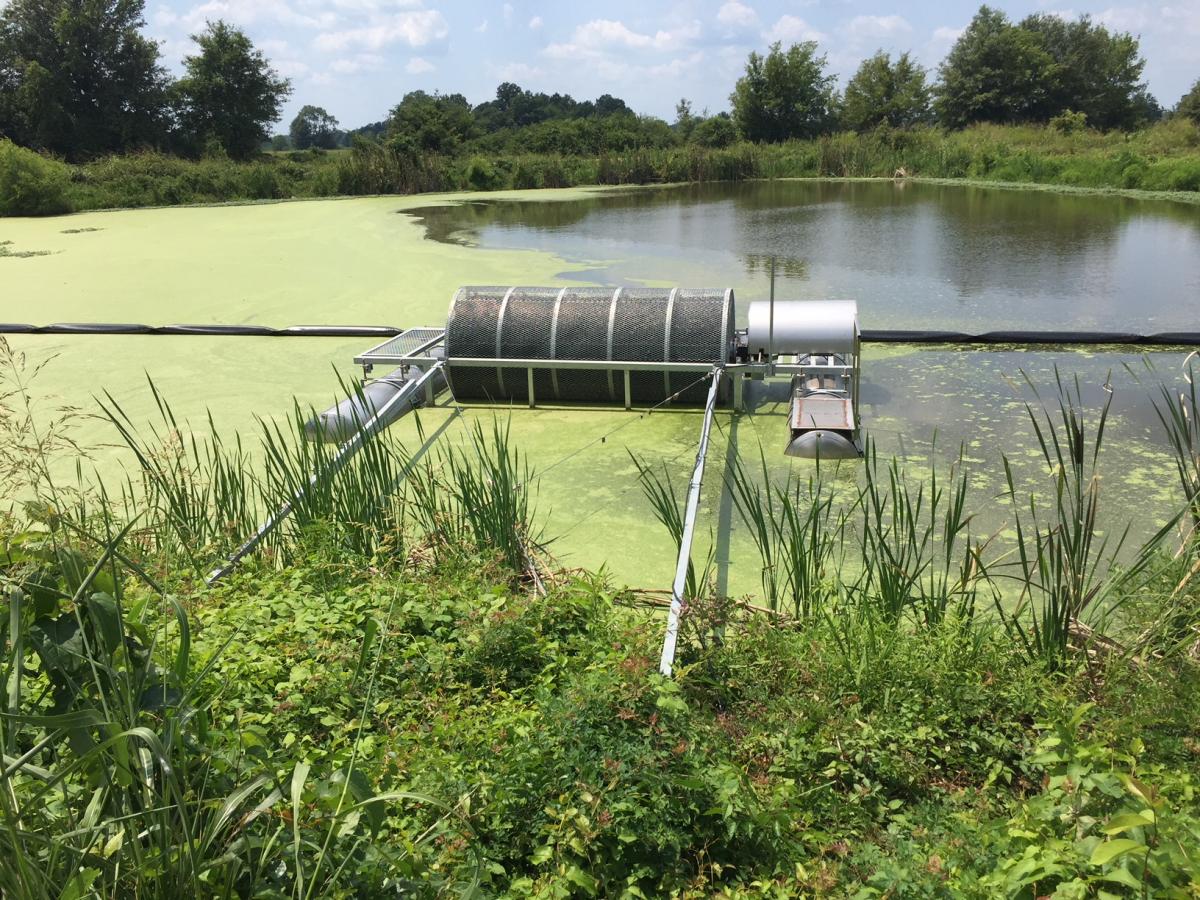BIOFLO
S&N AIROFLO'S NEW "BIOFLO" ATTACHED GROWTH SYSTEM FOR UPGRADING LAGOONS



S&N AIROFLO has developed and tested a new attached growth treatment unit that can be used to upgrade lagoons to achieve more efficient nitrification. Most lagoons struggle to consistently meet 30/30 requirements for BOD5 and suspended solids. The new "BIOFLO" unit is an attached growth process that promotes the growth of nitrifying bacteria on plastic media. The unit is essentially a floating rotating biological contactor.
BIOFLO Brochure Literature
The BIOFLO treatment unit is in the polishing cell following a two-cell aerated lagoon serving a subdivision in Desoto County, Mississippi. The lagoon receives about 30,000 gpd of domestic wastewater. The unit was installed on August 17, 2006. The average influent characteristics for this facility are shown below:
|
BOD5
|
278 mg/L
|
|
TSS
|
157 mg/L
|
|
Ammonia-N
|
30 mg/L
|
The average effluent characteristics prior to installation of the S&N BIOFLO unit (early June to mid-Aug 2006) are provided below:
|
CBOD5
|
6 mg/L
|
|
BOD5
|
14 mg/L
|
|
TSS
|
13 mg/L
|
|
Ammonia-N
|
19 mg/L
|
|
Dissolved O2
|
2.4 mg/L
|
The average effluent characteristics after installation of the S&N BIOFLO unit (early Sept to mid-Oct, 2006) are provided below:
|
CBOD5
|
4 mg/L
|
|
BOD5
|
13 mg/L
|
|
TSS
|
19 mg/L
|
|
Ammonia-N
|
1.1 mg/L
|
|
Dissolved O2
|
4.4 mg/L
|
The average effluent characteristics after installation of the S&N BIOFLO unit (mid Oct to mid-Nov, 2006) are provided below:
|
CBOD5
|
9 mg/L
|
|
BOD5
|
20 mg/L
|
|
TSS
|
28 mg/L
|
|
Ammonia-N
|
1.2 mg/L
|
|
Dissolved O2
|
6.3 mg/L
|
|
Temperature
|
15.6 ℃
|
One concern that is often expressed about rotating biological contactors is the accumulation of excessive biomass on the media as a result of biological metabolism. In the case of the S&N BIOFLO unit, excess biomass accumulation is not a concern. The reasons for this are the low concentration of organic matter in the lagoon effluent and the low yield of nitrifier biomass. The effluent BOD5 concentration is typically less than 30 mg/L, and the soluble BOD5 concentration is less than 10 mg/L. The theoretical yield of heterotrophic biomass per unit BOD5 consumed is about 0.5. Therefore, heterotrophic biomass production near the lagoon effluent is very low. The ammonia-N concentration of the wastewater entering the polishing cell is about 20 mg/L. The theoretical yield of nitrifier biomass per unit ammonia-N consumed is about 0.15. Thus, nitrifier biomass production near the lagoon effluent also is very low. The relative biomass production in the polishing cell is therefore:
Relative heterotrophic biomass = 0.5 x 10 mg/L = 5 mg/L
Relative nitrifier biomass = 0.15 x 20 mg/L = 3 mg/L
Biomass growth on the BIOFLO media increased during the first two months of the study (August-October, 2006). During the third month of the study (October-November, 2006), biomass growth on the BIOFLO media has stabilized. Examination of the media indicates that microbial growth on the media has been light to moderate.



